OpenCASCADE Make Primitives-Box
eryar@163.com
Abstract. By making a simple box to demonstrate the BRep data structure of the OpenCASCADE. The construction method is different from BRepPrimAPI_MakeBox. In the paper construct the box from vertex, edge to solid, while in BRepPrimAPI_MakeBox from solid, shell to vertex. From the construction, the BRep data structure in OpenCASCADE also can be called the Winged-Edge data structure.
Key Words. OpenCASCADE, BRep, Box, The Winged-Edge Structure
1. Introduction
OpenCASCADE的Toolit TKPrim中提供了基本圖元的創建功能,像Box, Cylinder, Sphere等等。直接使用Package BRepPrimAPI中的功能,可以方便地創建出基本圖元,而不用關心其內部的數據結構。
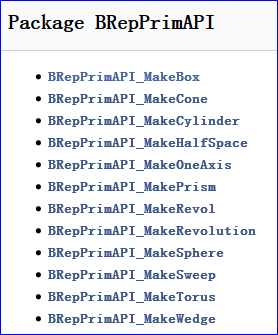
Figure 1. BRepPrimAPI Package classes
為了理解ModelingData模塊中OpenCASCADE的邊界表示法BRep數據結構,決定參考其實現,自己來創建出基本圖元,進而理解其中的BRep數據結構。本文以最簡單的長方體Box入手,從點、邊到體的創建出一個形狀。并將構造的形狀在Draw Test Harness中進行顯示,且進行布爾運算,來驗證構造結果的正確性。
2.Make a Face of the Box
在OpenCASCADE的包BRepPrim中,構造長方體的方式是形狀的根結點出發到葉子結點,即從Shell到Face到Wire最后到Vertex,如下圖所示:
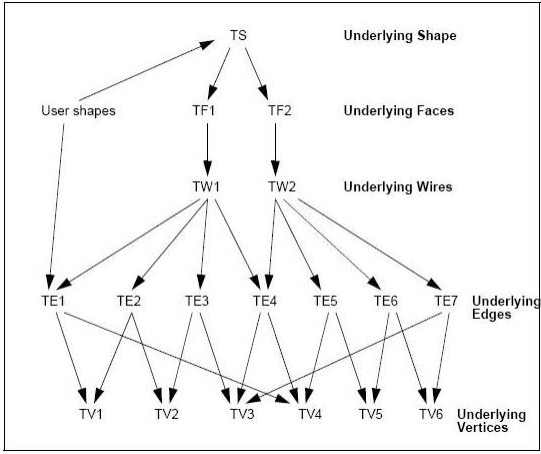
Figure 2.1 Data structure of a Shape
為了程序演示的清晰,本文中采用與OpenCASCADE中相反的方式,即先從葉子結點出發,逐步回到根結點,即先構造出頂點、邊最后到實體。長方體由六個面構成,所以先從一個面開始來構造。將一個面構造成功后,其他六個面的構造方法就相同了。
構造使用了BRep_Builder,在創建相應的拓樸的同時可以將其相關的幾何信息設置進去。如創建頂點Vertex時,可以將點的坐標信息及容差值設置進去,代碼如下所示:
BRep_Builder aBuilder;
// make vertex of the box.
aBuilder.MakeVertex(aVertices[0], aPoints[0], Precision::Confusion());
aBuilder.MakeVertex(aVertices[1], aPoints[1], Precision::Confusion());
aBuilder.MakeVertex(aVertices[2], aPoints[2], Precision::Confusion());
aBuilder.MakeVertex(aVertices[3], aPoints[3], Precision::Confusion());
aBuilder.MakeVertex(aVertices[4], aPoints[4], Precision::Confusion());
aBuilder.MakeVertex(aVertices[5], aPoints[5], Precision::Confusion());
aBuilder.MakeVertex(aVertices[6], aPoints[6], Precision::Confusion());
aBuilder.MakeVertex(aVertices[7], aPoints[7], Precision::Confusion());
創建邊的同時,將其邊中的三維曲線信息也設置進去,代碼如下所示:
// make edges of the box.
aBuilder.MakeEdge(aEdges[0], new Geom_Line(aLines[0]), Precision::Confusion());
aBuilder.MakeEdge(aEdges[1], new Geom_Line(aLines[1]), Precision::Confusion());
aBuilder.MakeEdge(aEdges[2], new Geom_Line(aLines[2]), Precision::Confusion());
aBuilder.MakeEdge(aEdges[3], new Geom_Line(aLines[3]), Precision::Confusion());
aBuilder.MakeEdge(aEdges[4], new Geom_Line(aLines[4]), Precision::Confusion());
aBuilder.MakeEdge(aEdges[5], new Geom_Line(aLines[5]), Precision::Confusion());
aBuilder.MakeEdge(aEdges[6], new Geom_Line(aLines[6]), Precision::Confusion());
aBuilder.MakeEdge(aEdges[7], new Geom_Line(aLines[7]), Precision::Confusion());
aBuilder.MakeEdge(aEdges[8], new Geom_Line(aLines[8]), Precision::Confusion());
aBuilder.MakeEdge(aEdges[9], new Geom_Line(aLines[9]), Precision::Confusion());
aBuilder.MakeEdge(aEdges[10],new Geom_Line(aLines[10]),Precision::Confusion());
aBuilder.MakeEdge(aEdges[11],new Geom_Line(aLines[11]),Precision::Confusion());
創建的邊Edge還需要與頂點Vertex關聯上,且需要注意頂點的反向,示例代碼如下所示:
// set the vertex info of the edges.
// edge 0:
{
TopoDS_Vertex V1 = aVertices[0];
TopoDS_Vertex V2 = aVertices[1];
V2.Reverse();
aBuilder.Add(aEdges[0], V1);
aBuilder.Add(aEdges[0], V2);
aBuilder.UpdateVertex(V1, ElCLib::Parameter(aLines[0], aPoints[0]),
aEdges[0], Precision::Confusion());
aBuilder.UpdateVertex(V2, ElCLib::Parameter(aLines[0], aPoints[1]),
aEdges[0], Precision::Confusion());
BRepTools::Update(aEdges[0]);
}
接著創建Wire,創建Wire時需要注意邊的反向,從而構造成一個閉合的Wire,代碼如下所示:
// make wires of the box.
aBuilder.MakeWire(aWires[0]);
// wire 1: bottom
{
TopoDS_Edge E1 = aEdges[0];
TopoDS_Edge E2 = aEdges[1];
TopoDS_Edge E3 = aEdges[2];
TopoDS_Edge E4 = aEdges[3];
E3.Reverse();
E4.Reverse();
aBuilder.Add(aWires[0], E1);
aBuilder.Add(aWires[0], E2);
aBuilder.Add(aWires[0], E3);
aBuilder.Add(aWires[0], E4);
BRepTools::Update(aWires[0]);
}
關鍵是面的創建及面創建后,設置邊與面的關聯信息,即PCurve的信息。如果沒有PCurve的信息,可視化顯示就不能正確顯示出面,即網格化算法會失敗。長方體底面的創建及PCurve設置代碼如下所示:
// make faces of the box.
aBuilder.MakeFace(aFaces[0],new Geom_Plane(aPlanes[0]),Precision::Confusion());
aBuilder.Add(aFaces[0], aWires[0]);
// set bottom pcurve info of between the edge and surface.
{
// pcurve 0:
double u = 0.0;
double v = 0.0;
double du = 0.0;
double dv = 0.0;
gp_Dir DX = aPlanes[0].XAxis().Direction();
gp_Dir DY = aPlanes[0].YAxis().Direction();
ElSLib::Parameters(aPlanes[0], aLines[0].Location(), u, v);
du = aLines[0].Direction() * DX;
dv = aLines[0].Direction() * DY;
aBuilder.UpdateEdge(aEdges[0], new Geom2d_Line(gp_Lin2d(gp_Pnt2d(u, v),
gp_Dir2d(du, dv))), aFaces[0], Precision::Confusion());
// pcurve 1:
ElSLib::Parameters(aPlanes[0], aLines[1].Location(), u, v);
du = aLines[1].Direction() * DX;
dv = aLines[1].Direction() * DY;
aBuilder.UpdateEdge(aEdges[1], new Geom2d_Line(gp_Lin2d(gp_Pnt2d(u, v),
gp_Dir2d(du, dv))), aFaces[0], Precision::Confusion());
// pcurve 2:
ElSLib::Parameters(aPlanes[0], aLines[2].Location(), u, v);
du = aLines[2].Direction() * DX;
dv = aLines[2].Direction() * DY;
aBuilder.UpdateEdge(aEdges[2], new Geom2d_Line(gp_Lin2d(gp_Pnt2d(u, v),
gp_Dir2d(du, dv))), aFaces[0], Precision::Confusion());
// pcurve 3:
ElSLib::Parameters(aPlanes[0], aLines[3].Location(), u, v);
du = aLines[3].Direction() * DX;
dv = aLines[3].Direction() * DY;
aBuilder.UpdateEdge(aEdges[3], new Geom2d_Line(gp_Lin2d(gp_Pnt2d(u, v),
gp_Dir2d(du, dv))), aFaces[0], Precision::Confusion());
}
歷經艱辛,最后終于將一個面創建出來了,且可以在Draw Test Harness中顯示,如下圖所示:
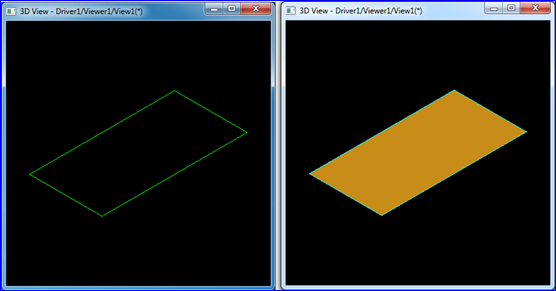
Figure 2.2 A Face of the Box in Draw Test Harness
如上圖所示,在Darw Test Harness中,邊的顏色是有講究的,說明如下:
In Draw Test Harness, shapes are displayed using isoparametric curves. There is color coding for the Edges:
v A red edge is an isolated edge, which belongs to no faces;
v A green edge is a free boundary edge, which belongs to one face;
v A yello edge is shared edge, which belongs to at least two faces;
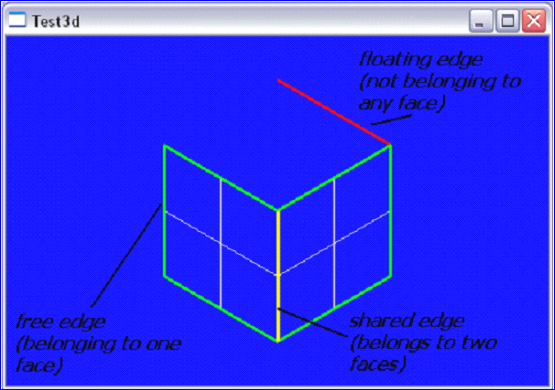
Figure 2.3 Color Coding for Edges in Draw Test Harness
如上圖所示,紅色的邊表示此邊不屬于任何一個面;綠色的邊表示此邊只屬于一個面;黃色的面表示此面至少屬于兩個面。
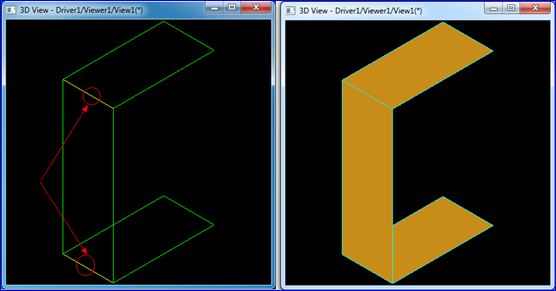
Figure 2.4 Shared Edges of the Box
如上圖所示,當創建出長方體的三個面時,側面與上下兩個底面相連的邊顯示成了黃色。其他邊都是綠色。
3.Finish the Box
將長方體的六個面按上述方式創建完畢后,需要驗證其正確性。于是將生成的數據導出為Brep格式,并與其他基本體進行布爾運算。
當導出的長方體為Shell時進行布爾運算會得到的也是殼體,如下圖所示的結果:
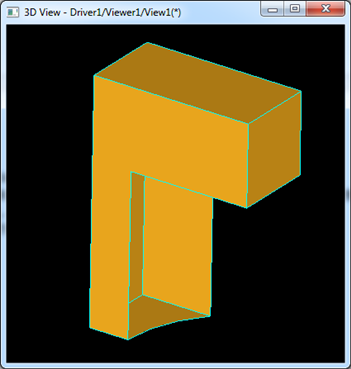
Figure 3.1 Box Shell Cut a Cylinder
當導出的長方體為Solid時,若面的方式未正確設置,則布爾運算會失敗,如下圖所示:
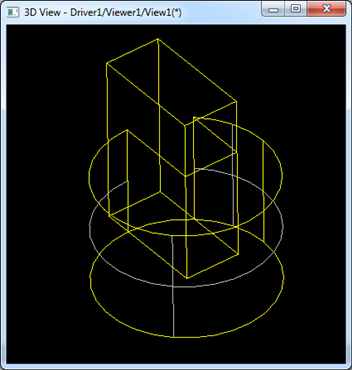
Figure 3.2 Box Solid Cut a Cylinder
如上圖所示,長方體與圓柱體的交線都已經計算出來了,但由于面的方向不對,不知道去除哪些面,保留哪些面。
將面的方向正確設置后,導出為Solid,進行布爾運算,結果正確,如下圖所示:
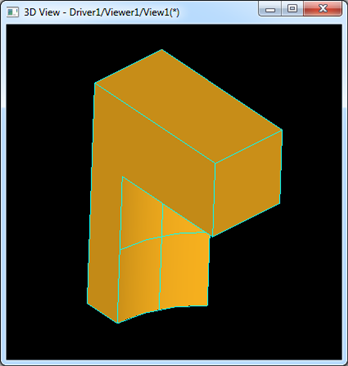
Figure 3.3 Box Cut Cylinder
測試用的Tcl腳本代碼如下所示:
#
# Tcl script to test the box BRep data.
# eryar@163.com
# 2014-11-16 21:55
# OpenCASCADE6.8.0
#
pload ALL
restore d:/box.brep b
pcylinder c 1.5 2
bop b c
bopcut r
vdisplay r
4.Conclusion
通過創建基本圖元,從而進一步來理解OpenCASCADE中的邊界表示BRep的數據結構。需要注意的事項有:
v 創建邊時,需要設置邊中幾何曲線的范圍;
v 創建邊時,需要設置正確與邊相關頂點的方向;
v 創建環時,需要確保環中邊的參數曲線PCurve能在參數空間中閉合;
v 創建面后,需要在邊中設置與面相關的幾何信息;
v 創建體時,需要所有面的方向正確;
注:最后發現前不久寫的一篇文章有誤,說OpenCASCADE的BRep不是翼邊結構。其實從邊出發是可以找到與點、面相關的信息的。因為OpenCASCADE中拓樸結構中有包含關系,所以頂點信息已經包含在邊中了,直接遍歷邊即可得到與此邊相關的頂點信息。所以,這樣看來OpenCASCADE中的BRep表示法也是翼邊的數據結構。
原文如下:
邊界表示方式比較。因為一般的書籍上都詳細重點描述了邊界表示中以為邊為核心的翼邊數據結構,所以有人想從這方面來給OpenCASCADE中的Brep表示法來給個說法。結合上面的類圖可知,從邊出發并不能訪問到與這條邊相關的其他信息,如頂點的信息。如果硬是想在這里給個名分,倒是從點出發可以找到邊及面的幾何信息,所以OpenCASCADE中的Brep表示法應該更像是以點為基礎的表示方法。OpenNURBS中通過ON_BrepTrim,可以訪問其他的信息,而ON_BrepTrim與邊ON_BrepEdge的意義有些相似,所以應該是以邊為核心的翼邊結構了。
5. References
1. OpenCASCADE BRep vs. OpenNURBS Brep. OpenCASCADE BRep vs. OpenNURBS BRep